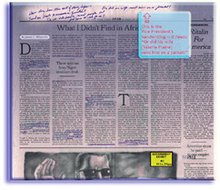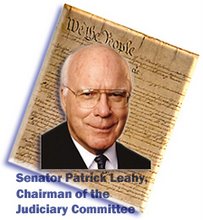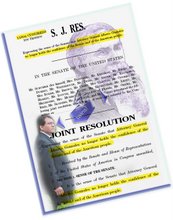LIVE VIDEO -- chairman conyers to hold october 30, 2007 hearing on alleged vote supression in DOJ's civil rights division
[FLOATED -- originally
posted 10.29.07 @ 9:05 a.m.
youtube video segments here.]no now with
a witness list. . .
but this link to a live
video stream will be in
operable condition by
early tuesday morning:

or, a CSPAN-3 FEED
Tuesday 10/30/2007 - 10:00 AM
2141 Rayburn House Office Building
Subcommittee on the Constitution,
Civil Rights, and Civil Liberties
Oversight Hearing on the Voting
Section of the Civil Rights Division
of the U.S. Department of Justice.
John K. Tanner
Chief
Voting Right Section
U.S. Department of Justice
Civil Rights Division
Toby Moore
Former Geographer/Social Science
analyst, CRT Voting Section
Laughlin McDonald
Director
ACLU Voting Rights Project
ACLU Southern Regional Office
Robert N. Driscoll
Alston and Bird
Julie Fernandes
Senior Policy Analyst & Special Counsel
Leadership Conference for Civil Rights
By Direction of the Chairman
Rep. John Conyers'
Opening Statement:
Last Congress, the Judiciary Committee was united in its effort to reauthorize the expiring provisions of the Voting Rights Act. Too many Americans face still barriers to exercising their right to vote and vigorous enforcement of this right by the Department of Justice is essential. Unfortunately, the Voting Section of the Civil Rights Division of the Justice Department, which is the primary agency charged with this responsibility, still faces many challenges, three of which I will highlight here.
First, we need a clearer understanding of how the Civil Rights Division interprets its responsibilities regarding photo identification requirements. Earlier this year, the Citizens’ Commission on Civil Rights issued a report criticizing the Voting Section's enforcement efforts and cited the pre-clearance of the Georgia photo identification requirement as a major example. In particular, the Commission cited Voting Section Chief Tanner's failure to fairly and vigorously enforce pre-clearence requirements of Section 5 as a result of partisan political concerns. The Commission concluded that this failure damaged the Section's procedural integrity and undermined its credibility.
I am particularly troubled by Mr. Tanner’s recent comments regarding the effects of photo identification requirements on minority voter participation. He said, for example, "Our society is such that minorities don't become elderly the way white people do; they die first." While Mr. Tanner has already demonstrated questionable judgment in overruling the decision of Justice Department lawyers to object to the Georgia photo ID law, this statement -- at least in my opinion -- demonstrates a severe lack of appreciation of what the Section's mission should be -- that minority voters should not be disenfranchised.
Second, serious management issues have also been raised with the Section’s core responsibility of Section 5 enforcement. Under Mr. Tanner's tenure, the corps of Section 5 analysts has been reduced from 23 to 8 positions. In addition, the Judiciary Committee is aware of complaints of racial discrimination against the Deputy Chief for Section 5 as well as other Equal Employment Opportunity complaints.
While I take seriously any allegation of discrimination, it is especially disturbing when the allegation is against the very institution that is charged with fighting against discrimination. In the coming year, the Voting Section will face a substantial increase in its work load due to preclearence requirements associated with the Federal elections. I look forward to hearing how the Mr. Tanner plans to address the allegations of a hostile racial environment in the Section and how he will rebuild the Section 5 analyst corps.
Third, the Section’s record with respect to Section 2 litigation, claims alleging discrimination in voting, is also problematic. In the first six years of the Bush Administration, fewer Section 2 cases were brought by the Voting Section than in any other administration since 1982. The number of Section 2 cases brought on behalf of African Americans has come to a virtual standstill. While Mr. Tanner’s testimony states that there has been a slight upswing in the last year, critics – particularly in the Latino community – note that the office's apparent overemphasis on Section 203 has left minority voters outside the political process, when they could have had a fair opportunity to elect candidates of their choice through Section 2 litigation. Bilingual voting materials are not the whole story for language minority voters.
The Voting Rights Act remains the “Crown Jewel” of our civil rights laws. Nevertheless, as the Citizens’ Commission on Civil Rights has detailed, those responsible for maintaining this treasure have faltered in their mission. In the next 14 months, the Voting Section has a substantial amount of work to complete. I hope that this hearing will highlight those challenges and that the Justice Department witness will suggest effective solutions. We have clearly reached the point where the status quo is unacceptable.
EXCERPT OF THE TESTIMONY OF TOBY MOORE:
. . .In Section 203 enforcement, in which the Section analyzes how well jurisdictions are meeting the needs of language minority voters, the Section repeatedly used inappropriate methods aimed at inflating the numbers of voters who needed assistance.
Time and again I pointed out what I saw as flaws in the methodologies being pushed by the Section, which were often simple errors in math or logic. I was either ignored, reprimanded or told not to work on such issues. The vast majority of these cases have been settled rather than adjudicated before a judge, which is no accident. On one of the rare instances in which the Section was required to present their statistical evidence in court, in Philadelphia in 2006, a three-judge panel soundly rejected it for precisely the same reasons I (and others) had cited for years. Some of the 203 cases brought in recent years certainly had merit, but many others were brought largely to pump up the Division’s statistics, and had marginal impact. Their real purpose, to me, was to provide cover for the Division’s deliberate failure to take on the more substantive voting rights work it had traditionally pursued. . .
. . . 3. Census figures showing a racial disparity in access to vehicles, a key piece of evidence in past Section analyses of ID laws, were dismissed by Tanner, even though in 1994 Tanner himself had cited that exact piece of evidence in denying preclearance to an ID law in Louisiana. This time, he rejected the 2000 Census data as out-of-date, despite the relative stability of the data across time and the availability of more recent numbers.
4. Tanner continues to deliberately misuse the racial data from the records of the Georgia Department of Driver Services by saying that blacks in Georgia are more likely than whites to have IDs. Flatly, this is not true. I don’t think the data is of much use in this regard, since we have racial data for less than 60% of the records, and there is ample reason to doubt that the racial data we do have is representative of the entire database. If one is going to cite the data, however, the proper comparison is not to voting age population, but to citizen voting age population, since the bulk of racial IDs comes from voter registration records. Unfortunately for Tanner’s argument, as he knows, using the proper CVAP figure shows that blacks are actually less likely than whites to have ID. (My recollection is that we found the black percent in the database to be 28.0%, while the CVAP was projected for 2005 at 28.7% and the VAP at 27.4%). I would like to know Tanner’s numbers, and where he got them.
5. Much of the DOJ’s defense of the Georgia ID law rests on figures showing increased turnout in other states which have passed ID restrictions, a favorite trope of current FEC Commissioner Hans von Spakovsky, who was responsible for the inclusion of this utterly irrelevant data in the staff memo. To please von Spakovsky, Tanner edited out our analysis showing why this information was of little use in assessing the potential damage to minority voters in Georgia, which proposed a much tougher ID law than any other state had enacted. As elected officials you know that turnout can vary widely for a range of reasons. After all, if turnout goes up after an ID law is enacted, what does that say about the usefulness of ID laws in the first place? Either there is not as much voter impersonation fraud as proponents claim, or ID laws are of little use in stopping it.
6. Tanner’s comment in California – that ID laws help minority voters because they discriminate against the elderly, since minorities die before reaching old age – is not only bizarre but flies in the face of his claim during the Georgia review that practically all Georgians had ID. He certainly never raised this novel hypothesis during our review of the law. As a matter of fact, Tanner may be surprised to learn that many African-Americans do actually become elderly – more than 200,000 Georgians aged 65 and over are black, one-fifth of the total elderly population. And, of course, Tanner left out the fact that elderly African-Americans in Georgia make up two-fifths of the impoverished elderly, the population probably most likely to lack IDs. Critical new data from the state of Georgia confirms this, as their analysis shows that African-Americans make up 40% of those voters 65 and over without ID. As Tanner would say, “just the math is such as that. . .”
7. Career staff found a study from the University of Milwaukee-Wisconsin to be one of
the few attempts to estimate the number of people who lacked licenses, and valuable for its suggestion that minorities were more likely to lack ID. Tanner edited the staff memo to dismiss the study as “not helpful,” because Wisconsin’s black population was “almost entirely urban,” which suggests that perhaps Tanner considered Atlanta to be rural. . .





































































No comments:
Post a Comment